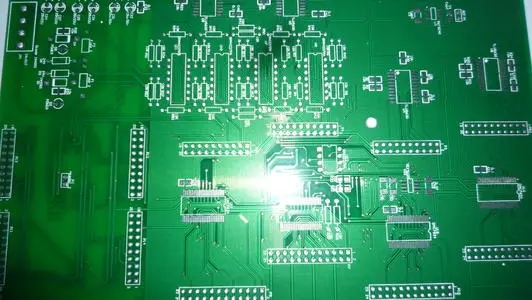In fact, the printed circuit board (PCB) is made of electrical linear materials, that is, its impedance should be constant. So, why does PCB introduce nonlinearity into the signal? The answer is: relative to the place where the current flows, the PCB layout is "spatially nonlinear.

Whether the amplifier draws current from this power supply or another power supply depends on the instantaneous polarity of the signal applied to the load. The current flows from the power supply, passes through the bypass capacitor, and enters the load through the amplifier. Then, the current returns from the load ground (or the shield of the PCB output connector) to the ground plane, passes through the bypass capacitor, and returns to the power source that originally provided the current.
The concept of current flowing through the path of least impedance is incorrect. The amount of current in all the different impedance paths is proportional to its conductivity. In a ground plane, there is often more than one low-impedance path through which a large proportion of the ground current flows: one path is directly connected to the bypass capacitor; the other is to stimulate the input resistance before reaching the bypass capacitor. Figure 1 illustrates these two paths. The ground return current is the real cause of the problem.
When the bypass capacitors are placed in different positions on the PCB board, the ground current flows to the respective bypass capacitors through different paths, that is, the meaning of "spatial nonlinearity. If a large part of the component of a certain polarity of the ground current flows through The ground of the input circuit only disturbs the component voltage of this polarity of the signal. If the other polarity of the ground current does not disturb, the input signal voltage changes in a non-linear manner. When a polarity component When there is a change and the other polarity is not changed, distortion will occur, and it will appear as the second harmonic distortion of the output signal. Figure 2 shows this distortion effect in an exaggerated form.
When only one polarity component of the sine wave is disturbed, the resulting waveform is no longer a sine wave. Use a 100Ω load to simulate an ideal amplifier, make the load current pass through a 1Ω resistor, and couple the input ground voltage on only one polarity of the signal, then the result shown in Figure 3 is obtained. Fourier transform shows that the distorted waveform is almost all the second harmonic at -68dBc. When the frequency is high, it is easy to generate this degree of coupling on the PCB. It can destroy the excellent anti-distortion characteristics of the amplifier without resorting to too many special non-linear effects of the PCB. When the output of a single operational amplifier is distorted due to the ground current path, the ground current flow can be adjusted by rearranging the bypass loop and keeping the distance from the input device, as shown in Figure 4.
The above is an introduction to how to reduce harmonic distortion in PCB design. Ipcb is also provided to PCB manufacturers and PCB manufacturing technology.
Multi-amplifier chip
The problem of multi-amplifier chips (two, three or four amplifiers) is more complicated because it cannot keep the ground connections of the bypass capacitors far away from all input terminals. This is especially true for quad amplifiers. Each side of the four-amplifier chip has an input terminal, so there is no space for a bypass circuit that can reduce the disturbance to the input channel.
Figure 5 shows a simple method of the four-amplifier layout. Most devices are directly connected to the four amplifier pins. The ground current of one power supply can disturb the input ground voltage and ground current of the other channel power supply, causing distortion. For example, the (Vs) bypass capacitor on channel 1 of the quad amplifier can be placed directly near its input; and the (-Vs) bypass capacitor can be placed on the other side of the package. (Vs) ground current can disturb channel 1, while (-Vs) ground current may not.